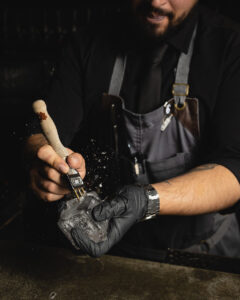 Lighting is one of the most vital elements in photography, shaping how an image looks and feels. Lighting techniques can make a photograph moody or focused. Natural light, artificial lighting, and softboxes achieve this effect. Each technique highlights details and stirs emotion in the images.
Lighting is one of the most vital elements in photography, shaping how an image looks and feels. Lighting techniques can make a photograph moody or focused. Natural light, artificial lighting, and softboxes achieve this effect. Each technique highlights details and stirs emotion in the images.
Natural Lighting
Natural light is sunlight, often the simplest and cheapest lighting source. Photographers use the time of day and weather to their advantage. For example, “golden hour” just after sunrise or before sunset provides soft, warm light for portrait or landscape photography. Natural lighting is often chosen for its authenticity, but it has to be adapted to weather and time.
Studio Lighting
Studio lighting is the use of artificial lights that photographers control. Therefore, this yields consistent results and is preferred for product, fashion, and portrait photography. Studio lighting can be one or two lights with a simple switch or multiple light sources, reflectors, and diffusers. The key benefit is controlling every aspect of lighting and consistency at any time and anywhere.
Backlighting
Backlighting is when the light source is behind the subject, often creating a silhouette. They can give a photograph depth and drama by illuminating the subject’s outline while preserving details in shadow. This can be done in nature photography or through artistic moody shots. It’s also used to show texture or contrast light with dark.
Rembrandt Lighting
Rembrandt lighting produces a small triangle of light on the cheek opposite the light source. It’s a common technique for portraits because it plays both shadow and light, giving depth to a subject’s face while still allowing enough light to show detail. Such a technique involves positioning the light about 45 degrees to the side and just above the subject.
Butterfly Lighting
Butterfly lighting, also known as paramount lighting, involves placing the light directly above and slightly in front of the subject to create a butterfly-shaped shadow under the nose. It highlights cheekbones and gives portraits a smooth, even glow, especially when photographing women or models. Sometimes, butterfly lighting is combined with a reflector or fill light below the subject to soften shadows.
Knowing several different lighting techniques helps photographers adapt to different environments and subjects. Whether it’s the warm glow from natural light or the bright spotlight beam, each affects the photograph. Learning these techniques produces dynamic and visually compelling images. When used creatively, lighting can make ordinary photos extraordinary.
At LemonAd Media, we partner with passionate San Franciso Bay Area restaurant owners who recognize the transformative power of top-tier food and beverage photography. We collaborate with clients who prioritize quality, understanding that a strong online presence mirrors the excellence of their offerings. While we’re based in San Leandro, we’re only a short drive from Castro Valley. Our mission is to capture the unique culinary identity of each establishment through captivating imagery that conveys passion and artistry.



